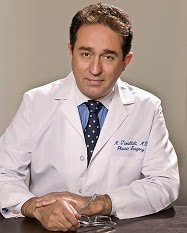This week I attended the annual meeting of the American Society of Plastic Surgeons, the national organization to which all board certified and eligible Plastic surgeons can belong,in Baltimore, Maryland.
This conference and others like it which I attend regularly, provides not only an opportunity to discuss with colleagues their techniques for surgery, the chance to see the latest tools and gadgets for plastic surgery, but also an educational opportunity to learn new techniques that are being proposed.
Last year saw the FDA approval of silicone breast implants and their re-introduction into the US market after 15 years of restricted use. Currently only 16-18 % of breast implants in the US are being performed with silicone implants. The majority of patients and surgeons still prefer the saline implants. Last week a new technique for breast augmentation using the patient’s own fat was proposed as being an alternative for some patients.
Fat has always been thought of as the ideal breast augmentation material since the breast itself is mainly made of fat in any case. With a breast enlargement with fat, there would be no foreign implants or the risks associated with such. However, Plastic surgeons have been taught for decades that fat injection into the breasts is not a choice in breast augmentation as the fat would lead to micro-calcifications over time that could be confused with the type of calcifications seen with breast cancer. This was then thought to lead to many women having unnecessary breast biopsies and having to deal with the ordeal of a possible breast cancer.
Now it seems, that the techniques for identification of calcifications on mammograms have improved that there seems to be no confusion between a benign fatty calcification and the type caused by cancer. Fat injection into the breast is now being studied as an alternative to breast augmentation with implants.
From my experience with fat injections into the face and buttocks I already know that when injected, some fat will die and be re-absorbed into the body. The skill of the surgeon, technique used, amount of fat used and its preparation are all factors that affect the survival of the fat grafts. However it is safe to assume that some fat will remain and that the breast enlargement will be permanent to some degree. I would suspect that initially this is would be a good method for patients who would otherwise be candidates for smaller implants. Of course, patients need to have sufficient amounts of fat to be liposuctioned before any can be injected and should realize that multiple (2-3) procedures may be necessary. Patients who are considering this technique can contact me for more information.
About Dr. Tavallali
- Dr. Tavallali
- Annandale, Virginia, United States
- Dr. Tavallali is one of the area's most experienced surgeons specializing in cosmetic plastic surgery. He completed his undergraduate work at Georgetown University, after which he obtained a Masters Degree in Physiology and Biophysics before entering the Medical School. He graduated with Honors from Georgetown University School of Medicine and trained as a General Surgeon at Lenox Hill Hospital in New York City. He completed his Plastic and Reconstructive Surgery at Baylor College of Medicine at the Texas Medical Center in Houston. You can visit Dr. Tavallali's website, by going to www.Tavmd.com.
Tuesday, October 30, 2007
The Latest trend in Breast Augmentation
Posted by
Dr. Tavallali
0
comments
Labels:
breast,
breast augmentation with fat,
breast enlargement,
breast implants,
breast surgery,
fat injections,
fat transfer,
plastic surgery,
tavallali,
washington dc


Subscribe to:
Posts (Atom)

